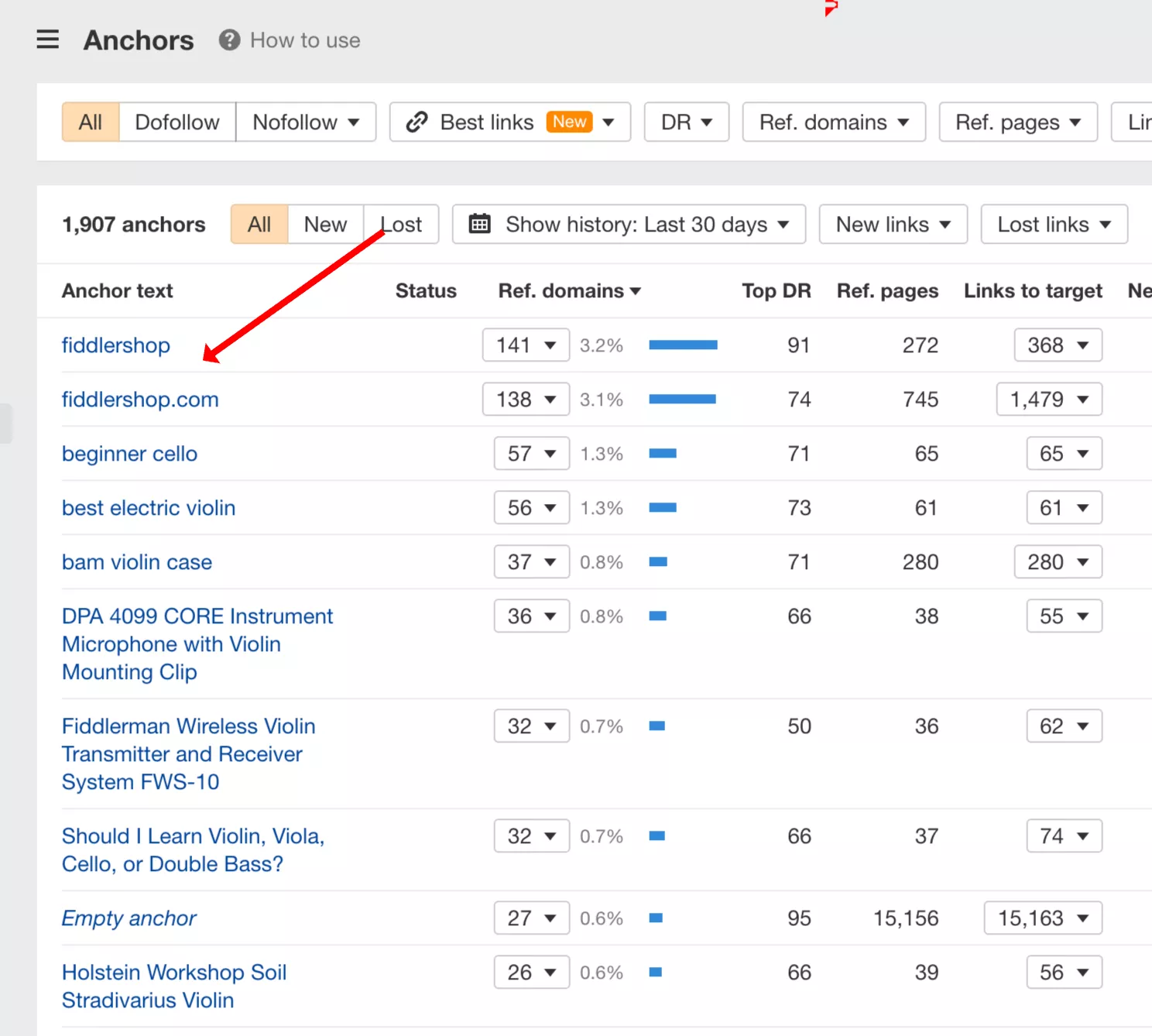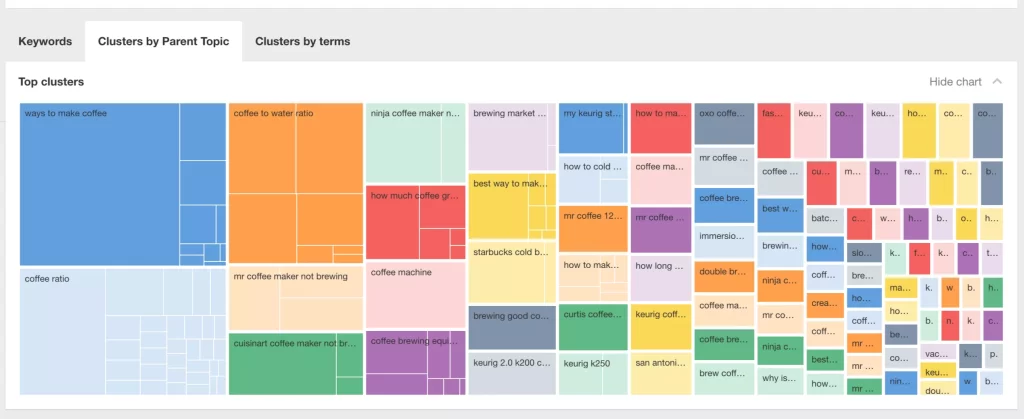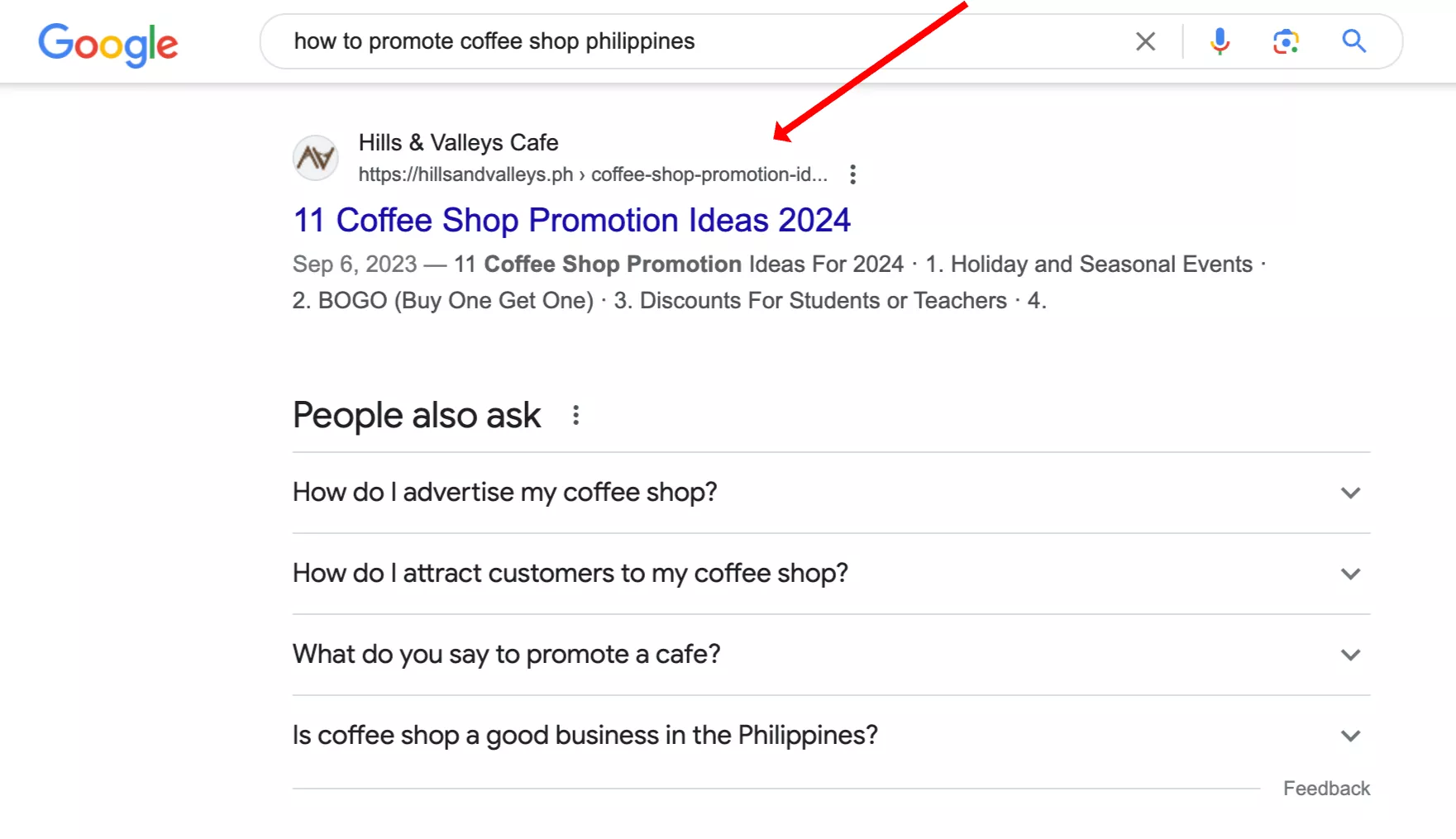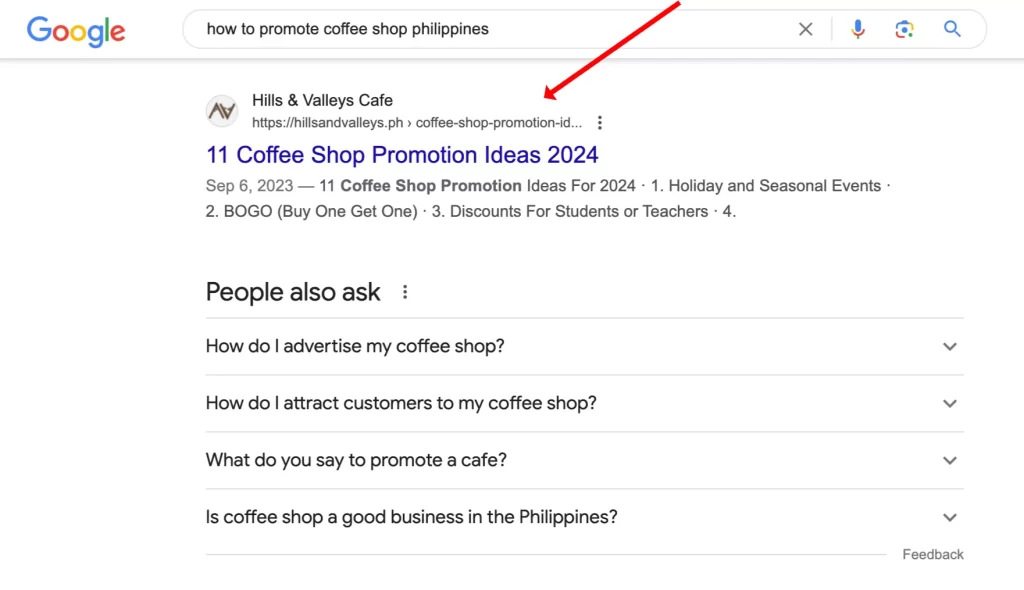How to Optimize Anchor Texts Effectively
Search engines have long used anchor text to provide context clues as to the relevance of a given link to a website.
Many have abused it and have suffered under Google Penguin’s update, which penalizes sites that were over-optimizing their page content with keyword-rich anchor texts.
It is imperative not to use this abusive and spammy strategy to avoid penalties and bad rankings.
As Google favors sites with a diverse and natural backlink profile, your site will dramatically benefit from proper anchor text optimization.
In this post, I’ll cover the best practices how to optimize anchor texts that favor Google and provide the best experience for users.
But first, here’s a quick recap of anchor text basics.
Types of Anchor Texts
- Generic - non-topical related words, such as “click here” or “go here”.
- Branded - words that used your brands/entities. An example is “SharpRocket”
- Naked link - actual URL to your target page. Example: www.sharprocket.co.uk
- LSI (latent semantic indexing) - variations of primary keywords. Examples for the keyword, “backlinks” are “contextual backlinks”, “inbound links”, “organic links”, and, “in-content links”.
- Partial match - a combination of qualitative modifier and target keyword (e.g., best link building agency is a partial match to link building agency).
- Broad match - longer in terms of length (5 words or more). An example is “best link building company in the Philippines”.
- Exact match - keyword-rich anchor texts (e.g., SEO agency).
Have a good understanding of these types of anchor texts, as it is foundational in mapping out a well-played strategy of choosing anchor texts for each backlink for your site.
Anchor Text Optimization Best Practices
1. Use Semantically-Related Keywords More Often
With Google Hummingbird and numerous core updates to interpret natural language queries and the context of words, it is easier for search engines to understand the topical relevance of a page through entities and surrounding words and phrases (co-occurrence).
This is a heavy alternative to optimizing the exact-match anchor text to all (or the majority) of all inbound backlinks to your site where high risks are involved due to possible penalties.
Identify how search engines recognize your brand.
You can use Google’s autocomplete or autosuggest feature to see keywords that Google associates with your brand. Keyword research features from Ahrefs, and SEMRush can also assist you by searching directly for your brand names.
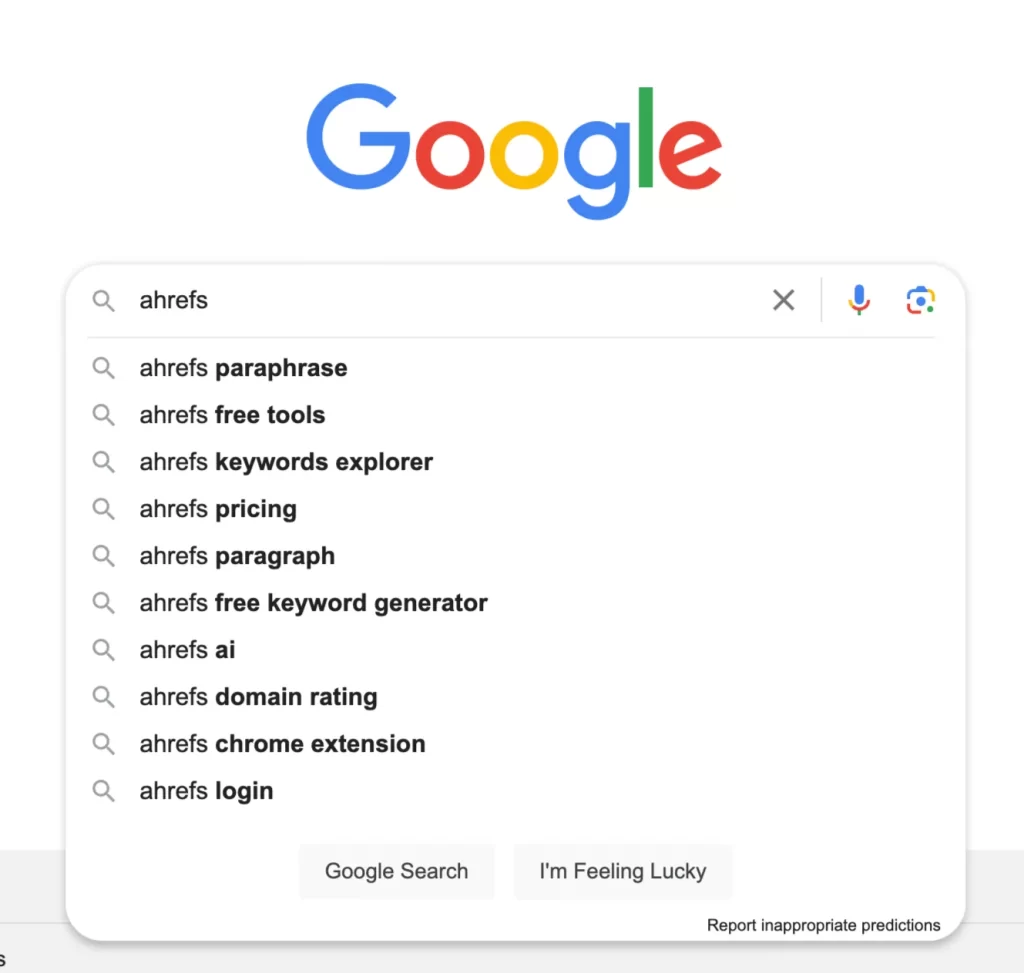
This is more useful for established sites in ensuring you’re building the right topical relevance of your brand (as to what topics and keywords you want your associate to be known for, at least on search).
Once you’ve identified semantically related keywords, you can use them as specific anchor texts for your links.
2. Learn How Real Publishers Reference Other People’s Works
Whether you’re creating new content on your site or external content on others’ blogs, make sure that you consider the natural approach of referencing the works of others.
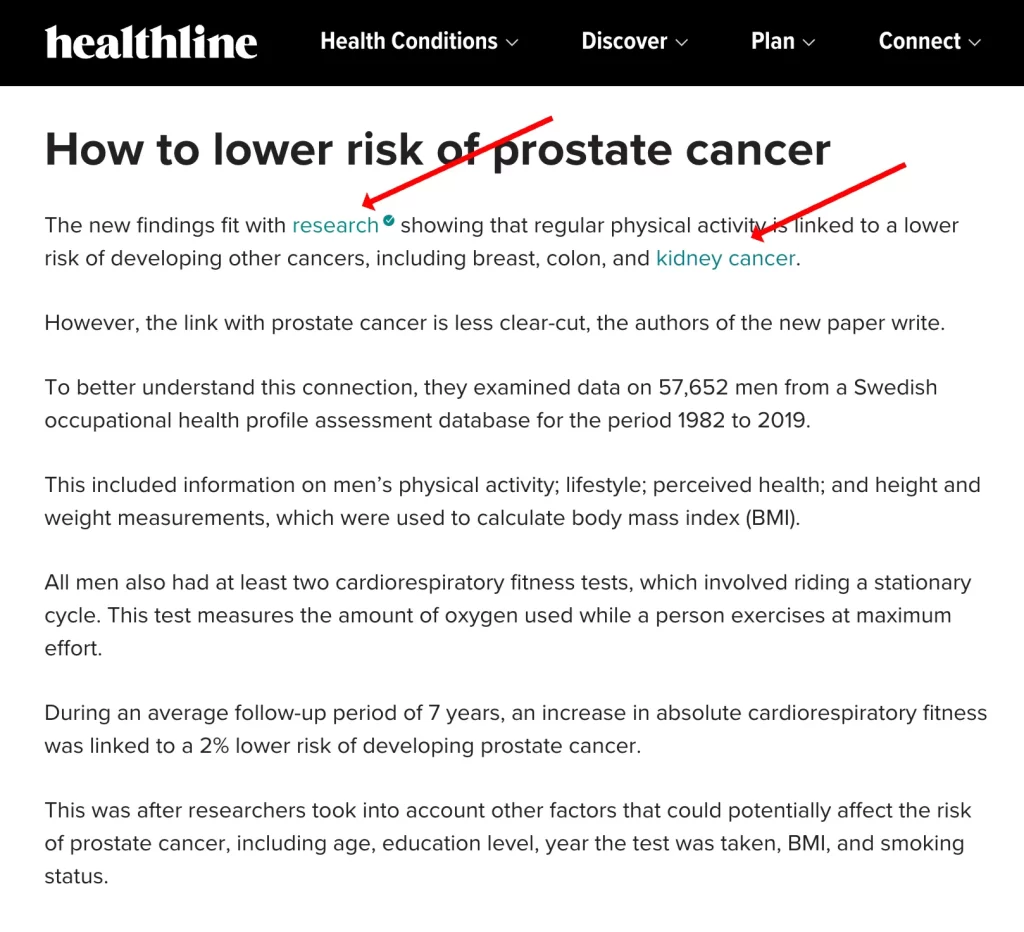
You can use highly descriptive anchor texts to provide more context to the linking page and help entice better user clicks from users (which also drives more referral traffic to your page).
Linking out to credible sources and properly citing others’ works helps increase trust (Google’s EEAT factor), depth of quality, and perceived value of your content.
This approach goes beyond the traditional approach of writing ‘guest posts’ to acquire inbound links. As we are all aware, the content from linking pages can assist in building your site’s topical authority (off-page).
3. Think Branding
Having worked with enterprise-level link acquisition campaigns for years, we’ve seen how top-level in-house SEOs value every face of link building, including how they choose the right anchor texts.
Obviously, they don’t want their sites to be affected by penalties and bad rankings (as it could result in millions of dollars lost for their business).
But more than that, they view link building as a branding tool. It affects how both search engines and users perceive their brand.
When building artificial links to your site, focus more on branded anchor texts (brand name, entity name, products, offerings, employees’ name, content assets, etc..).
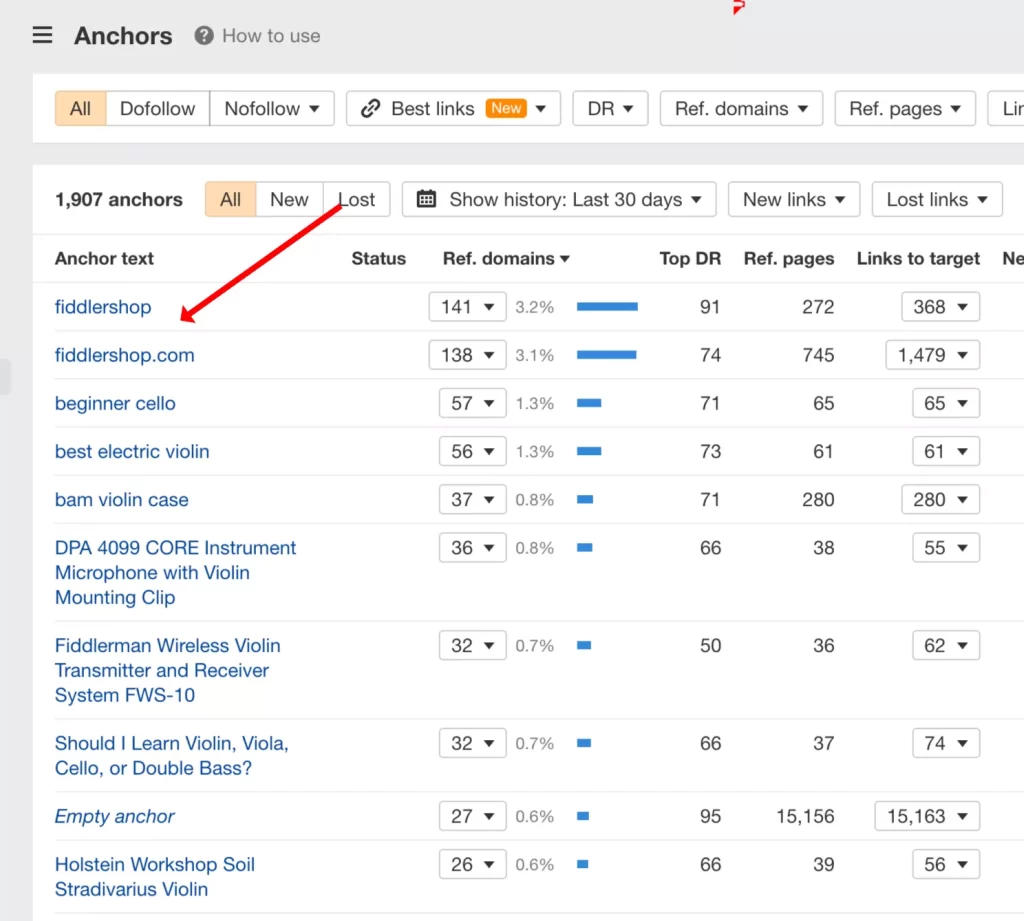
Utilizing branded anchor texts helps build awareness and curiosity about your brand from readers of other sites, who might eventually search for you on Google (increasing the volume of your site’s branded searches).
4. Explore Topics, Not Just Keywords
Research around topics to identify secondary keywords related to each industry.
If you’re doing an entirely new SEO campaign for a particular client, try to explore keyword themes using tools like Ahrefs or SEMRush.
Find interesting words your target audience uses to describe the topic. You can leverage these supporting keyword phrases to build external content around that central theme.
Note: Ahrefs has this feature (Clusters by Parent Topic).
5. Place LSI and Secondary Keywords On Linking Pages
Improve the quality of your external content assets (e.g., guest posts) by placing more LSI and secondary keywords within subheadings, images’ alt tags, and content body.
Invest time enhancing the reading experience and optimizing your external content to rank for multiple keyword variations on Google.
You can use more relevant Nouns and entities to enhance entity recognition (check out this Entity Optimization guide).
By referencing entities like direct or non-direct competitors, industry thought leaders, and personalities, you increase the topical relevance of your content, which brings more contextual understanding to your anchor texts.
Overall, it helps your site get the most value from every backlink produced.
6. Link to Rich and High-Value Content
Avoid misleading your readers by forcefully linking to sales pages to push rankings for target commercial keywords.
Implement a strict strategy with your team to link only to relevant informational pages.
Instead of pointing all links to landing pages, you can have a better holistic link building plan to create an internal linking system (linking your site’s informational pages to relevant landing pages.
This approach helps your site to pass link equity/power to other important pages without risking the current rankings of your commercial pages.
Keep users have a better reading experience throughout the content, as it affects both branding and user interaction signals.
Integrate Anchor Text Strategy To Overall Link Building Strategy
The key to optimizing anchor texts is understanding their role and impact on your entire link building strategy. It is a top-bottom approach to enhance every facet of the link building campaign.
Easy Link Building For Intermediate SEOs
When marketers say ‘easy link building’, what do they genuinely want to look for (and say) are:
- Replicable processes and strategies for their junior SEOs/link builders
- Strategies that can reliably be executed in simple steps (with or without process documentation)
- Low efforts and time spent compared to other link building strategies
- Scalable enough for multiple similar types or industries of clients (for SEO agencies)
In this guide, I’ll show you five easy link building strategies that are scalable, sustainable, and replicable for your web properties (or clients’ sites).
1. Passive Link Building With Linkable Content Assets
Linkable content assets are content pieces that encourage other publishers to link to them, given that it is worthy of being used as an additional reference or citation.
It goes beyond the traditional blog posts in a way that addresses the intended topic most effectively (user satisfaction, reading experience, etc.).
Linkable content assets (also known as “link bait” content) include whitepapers, infographics, how-to articles, data visuals, statistics, calculators, and other content formats that stand out from the rest of its competing content.
Several ways help linkable content assets attract passive links. These include:
Ranking for informational keywords.
Content publishers at their writing stage typically search on Google to find pages that could be additional resources/references. If it covers the topic in-depth, these content publishers are likelier to link to it instead of adding another section to their content to write about the subject.
Robust Community and Following
Establishing yourself as a thought leader in your space helps get passive links from niche site owners/bloggers who follow you in every content piece you publish.
By being at their top-of-mind, they lean on your every new work if they want to refer their networks/readers to a topic you’re an expert in. This builds more trust and credibility in the eyes of their followers, which helps you absorb more followers to your site (and eventually more passive links from their followers’ new content).
2. Content Partnerships
One central area that makes link acquisition more effective (and, in most cases, easier) is having relationships to start the link building process.
Relationships alone can initiate the exchange of links. Both parties can rely on trust in relationships and the value of content these two publishers can bring to each other’s target audience.
Content partnerships are an easy link-building technique if you’ve got a couple of friends and networks you can contact.
However, those starting their link building can utilize manual outreach to build new relationships with content publishers who might be interested in co-creating and co-promoting content.
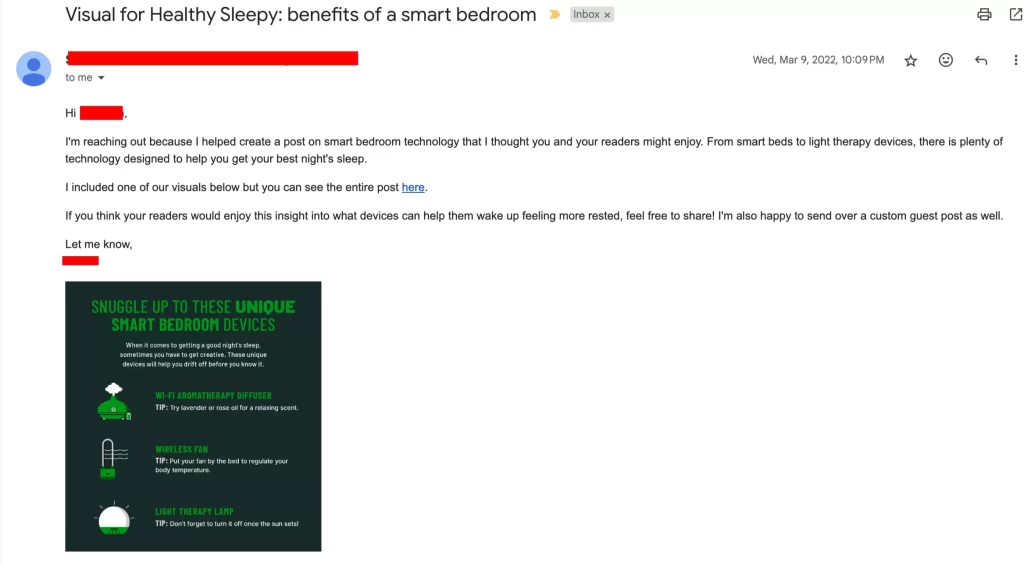
Start by identifying content publishers in the industry with similar or higher authority and trust of domains.
You would likely receive a positive response from someone with almost similar authority as both of you can take advantage of each other’s link equity to further push both sites’ organic rankings (assuming your sites are not competing).
This is opposed to reaching out to high DR sites (DR70+) when you’re just starting to build your site’s authority (say <DR30). Most more assertive site owners are looking for better and higher levels of content partnerships.
3. Link Solicitation
Ask for links from suppliers, vendors, client partners, organizations you’re part of, and other pertinent partners.
Link solicitation is a common practice in eCommerce, as most manufacturers have numerous suppliers and retailers they can tap and request links. Conversely, retailers and vendors can get branded links from where-to-buy pages of manufacturers’ sites.
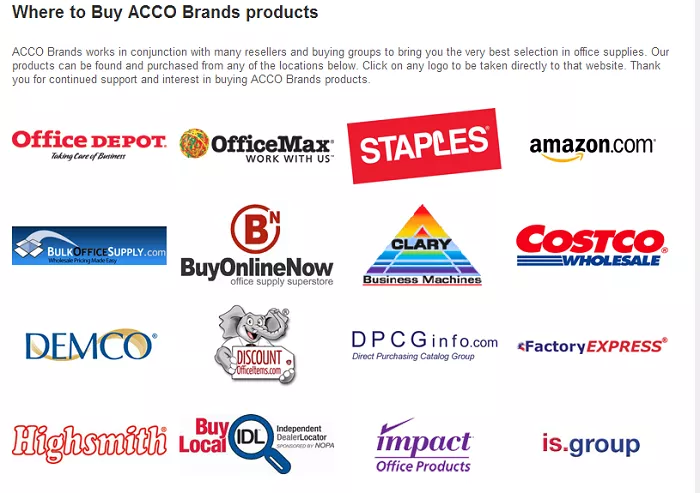
This activity is more valuable when both sites can offer links to landing pages, as these are primarily difficult to acquire links to, given their commercial intent, and not usually acceptable target pages by content publishers.
Remember to use this link solicitation with other link building strategies to get diverse link types, which naturalizes your link profile - having links for both informational and commercial pages.
4. Link Reclamation
Set up alerts for content sites that mention any of your assets or entities, including company members, profiles, brand names, products, or service offerings, where you didn’t have the link embedded in the mentions.
The major part of link reclamation is collecting a list of all these unlinked mentions and reaching out to them to reclaim links.
This approach has a high likelihood of link placement rates, given that the webmasters/publishers you’re contacting are already familiar with your content as they reference your entities on their pages.
Numerous blog posts have talked about this link building strategy. Here are some helpful guides:
5. Foundational Links
Building backlinks from trusted domains by Google (“seed sites”) is one of the most effective strategies to get initial trust and credibility for new sites.
Given that new sites take time before Google trusts these domains,
Start by completing and building links from social profiles, citations, and local and niche-specific directory links.
A legitimate business will create social profiles, including Facebook, Twitter, Instagram, and Linkedin. So, have your team fill out all the information on these social profiles and use them to promote your newest posts to increase brand reach and awareness.
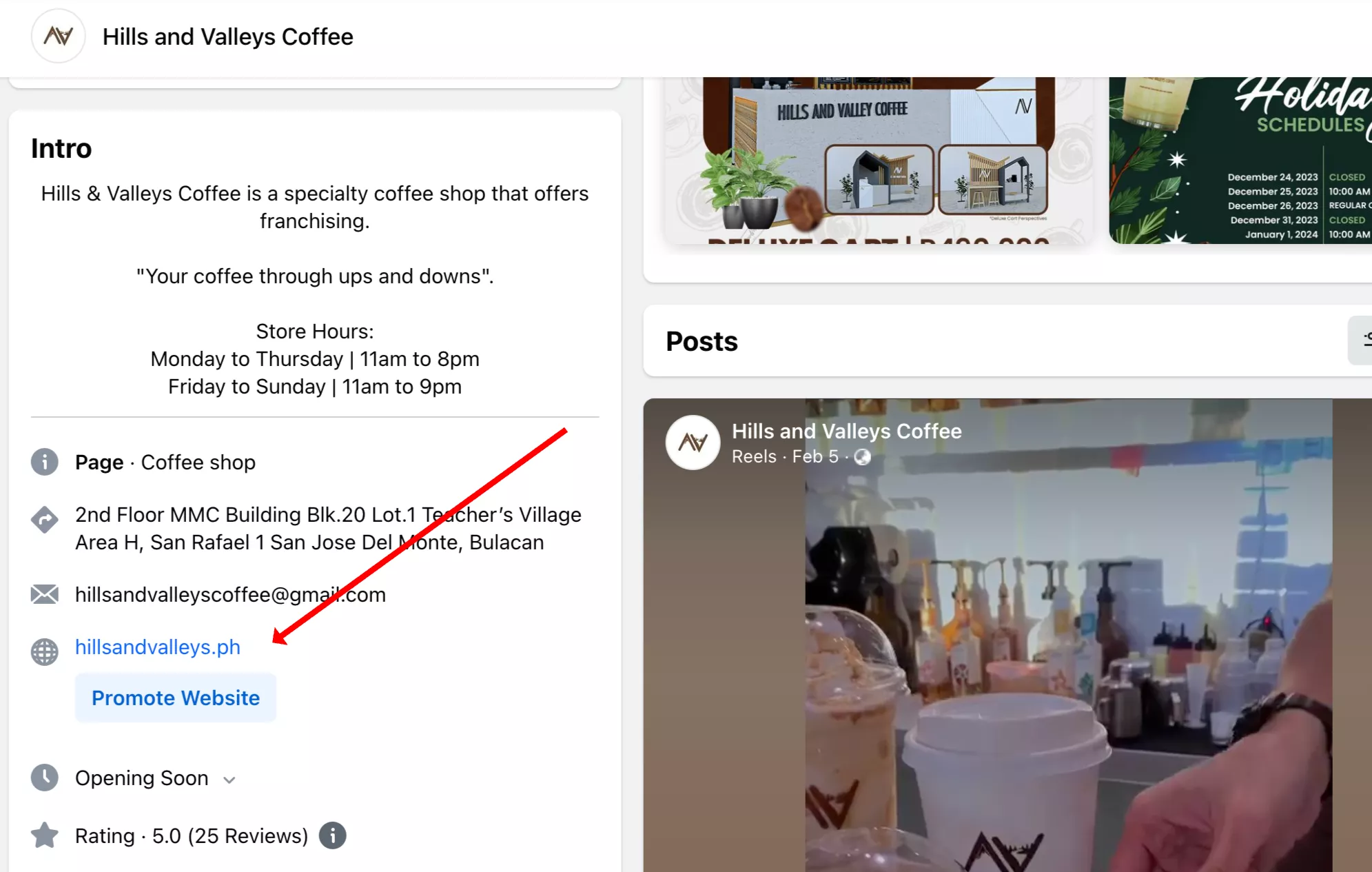
If you’re doing local SEO, citations help you promote NAP consistency, which is considered a robust ranking factor to assist your site in appearing on local map packs.
6. Resource Page Link Building
While more challenging than it used to be, resource page link building is still viable for content sites that consistently publish evergreen content assets. These types of content are necessary to acquire in-content links from resource pages.
Look for relevant industry sites with resource pages related to the topics of your content.
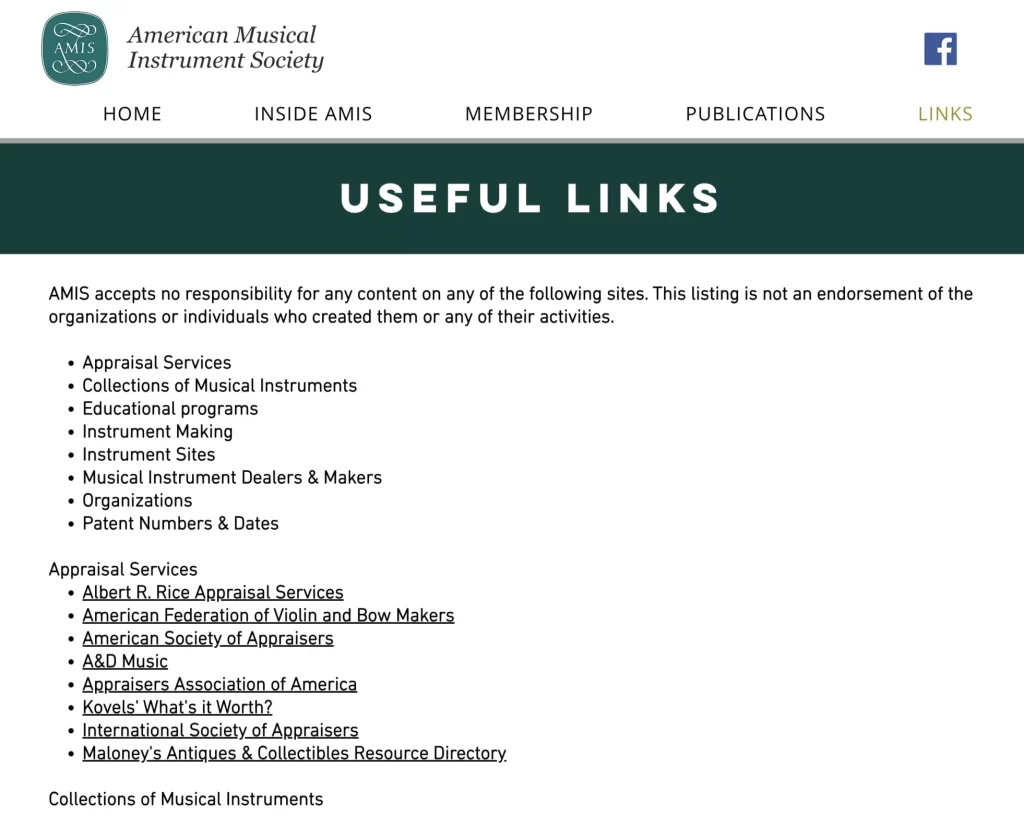
You may even find ones that contain broken or expired links, which you can ask to replace by links to the content you published on your site (“broken link building”).
Make your evergreen content assets more comprehensive (not necessarily longer) but valuable than the old page they linked to.
The easy part of this link building strategy is the angle that you don’t need to push hard your outreach emails, as your content itself and their broken link issue will speak of its value.
Compared to the link building era of 2012, where this technique has been widely used and guaranteed to be effective, you would find these opportunities minimal (~100 link prospects in a tight niche topic).
You can increase link and response rates with the right approach, emails, and content assets.
You can check out these resources to get started with resource page link building:
Link Building Takes Time
Link acquisition is resource-intensive and requires buy-in from stakeholders, proper strategy, and execution from the SEO or outsourced link building team.
The easy part is its doability and aftermath impact to organic traffic success once links are built.
